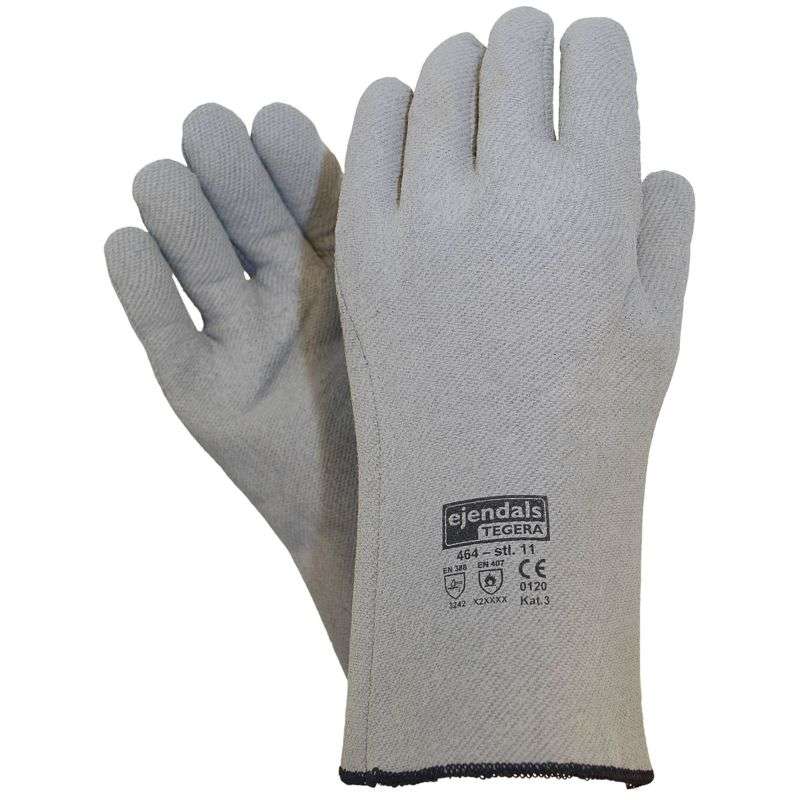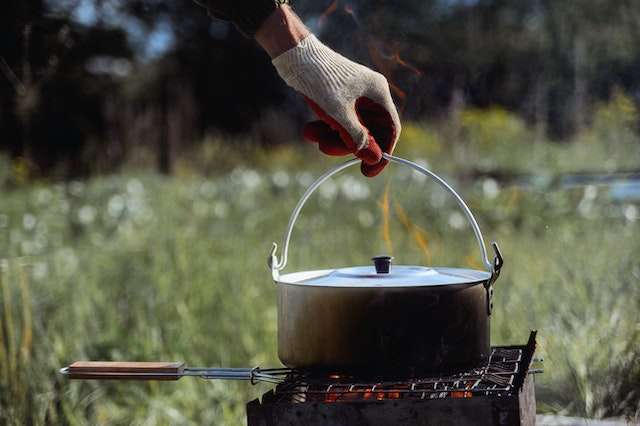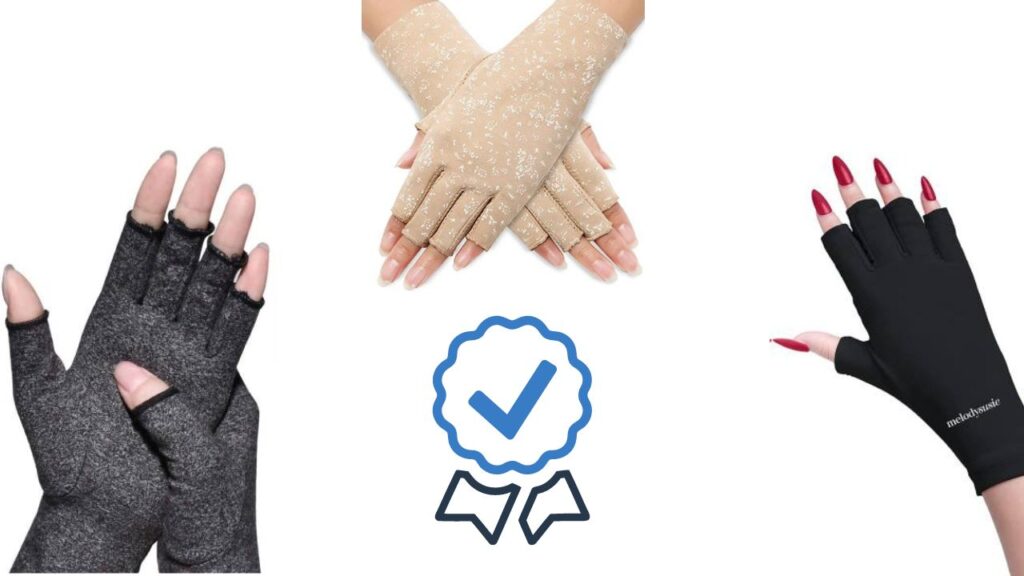When working with hot materials, it is important to use heat-resistant gloves to protect your hands from burns and other injuries. Here are some tips for choosing the right heat-resistant gloves:
-
Choose gloves that are rated for the appropriate temperature range. Different materials have different levels of heat resistance, so be sure to select gloves that are rated for the temperature of the materials you will be working with.
-
Look for gloves that are comfortable and flexible. You want gloves that will allow you to move your hands freely and perform tasks without hindrance.
-
Consider the level of grip and dexterity you need. Some gloves may have a roughened surface for better grip, while others may be more flexible for tasks that require more dexterity.
-
Check for any additional features that may be useful, such as cut-resistant materials or reinforced fingertips for added protection.
-
Make sure the gloves fit properly. Ill-fitting gloves can be uncomfortable and may not provide adequate protection.
In general, it is a good idea to err on the side of caution and choose gloves that are rated for higher temperatures than you expect to encounter. This will ensure that your hands are adequately protected in case of any unexpected increases in heat. It is also important to regularly inspect your gloves for signs of wear and replace them as needed.
Some Best Heat Resistance gloves for cooking
Table of Contents
How Do You Select the Right Heat Resistance gloves?
By understanding what questions you need to inquire. That is the point of the Beginner’s Guide to Heat Resistance.
1. How are Heat Ratings Measured?
How about we start with some foundation data by taking a gander at how we measure heat evaluations.
North American Standard (ASTM F1060):
The glove’s rating is dictated by the highest contact temp. where time to the severely burned area is over 15 seconds and time to pain is more than 4 seconds.
The standard rates the material b/w level 1 (under 176°F) and level 5 (608°F). Note: While the test stops at 608°Fahrenheit, the glove may have higher thermal security.
The European Standard (EN 407:2004):
This standard incorporates six thermal tests: consuming conduct, contact heat, convective heat, radiant heat, and the little or large sprinkles of liquid or molten metal.
We are zeroing in on the North American norms, however, Hannah Althorpe’s article Handling Extreme Temperature is a superb asset on the European norms.
2. How Hot is It?
Presently you realize how heat-resistant gloves are measured, however, what might be said about the thermal temperature of the things you’re contacting?
It’s critical to be precise with the reading (don’t attempt to assess). The simplest method to do this is with an Infrared Thermometer.
This progression is critical for two reasons:
In the event that you overestimate the heat of an item to “play is protected,” you may get a glove that has a lot of protection. This makes the glove cumbersome and will restrict adroitness.
By belittling the heat of the item, you’re putting yourself in danger of burns. You may likewise need to go through more cash because of lost-time wounds.
3. What is the Most Heat-Resistant Material?
There are two principal alternatives for heat resistant gloves:
Choosing the right material relies upon the heat of the thermal temperature. Normal Materials:
The most ideal choice for heat opposition beneath 450°F is normal materials like terry fabric.
The terry is “circled” when sewn which traps air to make an amazing cover.
The insurance terry fabric offers may not seem like a lot, however, who hasn’t utilized a dish material to remove something from the stove in the wake of losing a broiler glove?
The dish fabric and a terry-sew glove utilize a similar material. However long there aren’t hazard of cut or cut this cheap style of glove is an incredible choice.
Manufactured Materials:
Manufactured materials like Kevlar® are the most ideal choice for heat-opposition for temperatures over 450°F.
Terry texture starts roasting at these higher temperatures, so engineered materials function admirably as a shell over top of the terry lining.
Fluid Protection:
A neoprene glove is the smartest option for ensuring against steam or hot fluids. This engineered elastic opposes degradation and has a burning point of 500°F.
4. What are Your Work Conditions?
There is anything but a solitary perfect heat-resistant work glove. Each industry has conditions to consider while picking the right glove for your working environment.
The Type of Heat:
● Dry versus Sodden: The contrast between a string-sew or a neoprene-plunged glove.
● Thermal versus Surrounding: Is it through direct contact or the temperature in the room?
● Is there an open flame or spark?: If along these lines, you’ll need a glove treated with a fire-retardant substance.
● Are there different dangers?: heat might be the essential concern yet in businesses like metal stepping there might be hazards for cut or puncture. Engineered strands like Kevlar® give great cut security. Silicone palm covering like Temperbloc™ can expand cut opposition and give grasp.
5. Are There Other Factors to Consider?
We’ve covered the significance of knowing the temperature, distinguishing working conditions, and choosing materials. In any case, there are a couple of more interesting points:
● How hefty is the thing? A fifty-pound piece of steel needs significantly more contact to move than a five-pound piece.
● Is there a cool vacation? The glove will trap heat. On the off chance that there isn’t the ideal opportunity for it to chill off between utilizes, the client will start to feel the heat through the glove. In the event that the application happens consistently, a glove with more protection is required.
● How long will you be clutching the thing? The more you handle a thing, the more warmth will move from the item to your PPE.
● How significant is mastery? The more protection a glove has, the less movement your hand will have. Take a stab at a couple of gloves in the necessary heat assurance reach to track down the one that considers the most portability.
6. Discover a Balance:
By pondering the above factors you can choose the right kind of PPE for your industry.
Tracking down the best assurance is a difficult exercise, yet it doesn’t need to be a badly arranged compromise between comfort and security.
Points To Remember For Heat Resistant Gloves
Wear gloves whenever and where a sensible possibility exists of your hands reaching something adequately hot to cause a burn. The risk evaluation ought to show situations where gloves are required. There are a few cases, for example, glassblowing, where the expertise required can’t be accomplished wearing weighty gloves, yet the properties of the materials license taking care of them without injury.
It is vital that the gloves or gloves you pick are satisfactory to shield you from the temperature of the things you may contact. Remember that most gloves are proposed for contact with heat articles for a brief time frame. Fabric gloves and oven gloves give transient assurance at up to 200oC. Kevlar sew work gloves give comparable insurance yet are less bulky. Kevlar PBI (Polybenzimidazole) gloves are helpful at temperatures up to 900oC. Consult the manufacturer’s writing for the most extreme temperature rating for the glove that you are utilizing.
wear (put on) gloves and check for defects, tears, openings. The gloves ought to be a comfortable fit, yet not so free that they tumble off.
When Removing (doff) gloves don’t utilize your mouth to pull off gloves by the fingers. Try not to grasp the glove by an area that has recently been in touch with a hot item while you are removing it. One adequate technique is to somewhat remove one glove by pulling on the fingers, and with the fingers in the palm of the in part eliminated glove pull off the other glove by the fingers. Then, at that point, the mostly taken-out glove might be shaken from the hand. An option is essential to trust that the gloves will cool prior to removing them.
Gloves won’t permit contact with a hot article uncertainly. Contact with objects over the greatest temp. the limit for the glove will rapidly harm the glove and perhaps cause a huge burn. A few kinds of gloves may burst into flames whenever exposed to an immediate fire, or an item well over as far as possible for the glove. The gloves proposed for use at high temperatures are additionally pricey. There are a few tasks where the adroitness required can’t be accomplished with gloves appraised for the temperatures in question.
All gloves should be investigated before each utilization, for potential openings, tears, weak areas. Reusable gloves ought to be cleaned after each utilization if important and put away so they may dry all around. On the off chance that your hands sweat, it is judicious to wear a light dispensable under reusable gloves to prevent their inside from getting sodden. Most gloves can be cleaned with a cleanser and water, however, it is ideal to follow the maker’s guidelines if accessible. The valuable existence of reusable gloves will change radically relying upon the frequency of utilization, the sort of utilization, and the states of cleaning and capacity. Utilized gloves can be discarded as regular junk except if they have been contaminated with some hazardous material.



